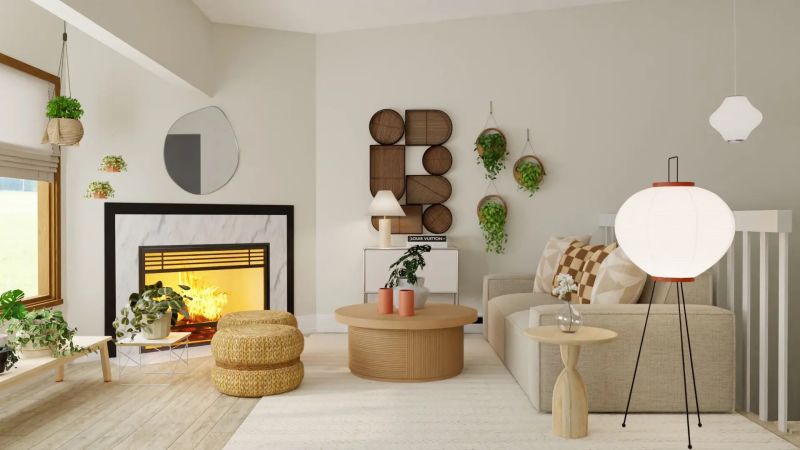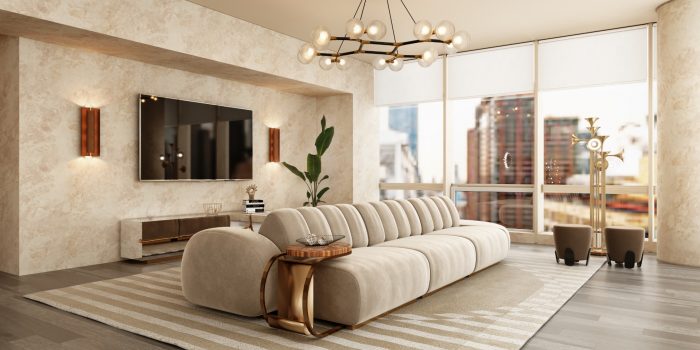Introduction
Modern minimalist home decor is all about embracing simplicity, functionality, and elegance. This design philosophy focuses on clean lines, neutral color palettes, and uncluttered spaces to create a calming and sophisticated atmosphere. Unlike traditional decor, which often relies on excessive ornamentation, minimalism strips away the unnecessary, leaving only what truly matters.
The appeal of minimalist decor lies in its ability to make small spaces feel larger and chaotic rooms feel tranquil. By carefully selecting furniture, decor, and materials, you can achieve a space that is both stylish and practical. Whether you’re redesigning your entire home or just refreshing a single room, modern minimalism offers a timeless aesthetic that never goes out of style.
The Core Principles of Minimalist Design
1. Less is More
The foundation of minimalist decor is the principle of “less is more.” This means eliminating unnecessary items and focusing on quality over quantity. Instead of filling a room with multiple decorative pieces:Modern minimalist home decor: minimalist design encourages selecting a few well-crafted items that serve both aesthetic and functional purposes.
For example, a single statement artwork on a blank wall can have a stronger impact than a gallery of smaller frames. Similarly, opting for a sleek, multi-functional sofa instead of multiple seating options can enhance both space and style. The goal is to create a visually open environment that feels intentional and harmonious.
2. Neutral Color Palettes
Minimalist interiors often feature neutral tones such as white, beige, gray, and soft earth tones. These colors create a sense of calm and allow other design elements—like textures and materials—to stand out. While bold colors can be used sparingly as accents, the overall palette should remain subdued to maintain the minimalist aesthetic.
For instance, a living room with white walls, a beige sofa, and a wooden coffee table exudes warmth without overwhelming the senses. Adding a single black accent chair or a muted green plant can provide contrast while keeping the space balanced Modern minimalist home decor.
Essential Elements of a Minimalist Home
1. Functional Furniture
Minimalist furniture is characterized by clean lines, simple shapes, and practicality. Each piece should serve a purpose, whether it’s storage, seating, or workspace. Avoid bulky or overly ornate furniture, as it can disrupt the flow of the room.

Popular choices include:
- Modular sofas that adapt to different layouts
- Sleek dining tables with slim profiles
- Floating shelves for storage without visual clutter
- Modern minimalist home decor
A well-designed minimalist home prioritizes movement and usability, ensuring that every item enhances daily life rather than complicating it.
2. Thoughtful Decor and Accessories
While minimalism discourages excessive decor, carefully chosen accessories can elevate a space. Opt for items that blend form and function, such as:
- A single large mirror to reflect light and create depth
- A minimalist clock with a simple design
- A few indoor plants to add life without clutter
The key is to keep surfaces clear and only display items that contribute to the room’s overall harmony.
How to Achieve a Minimalist Look in Every Room
1. The Minimalist Living Room
The living room should be a place of relaxation, free from unnecessary distractions. Start with a neutral base—light walls, a simple sofa, and a streamlined coffee table. Avoid overcrowding the space with too many throw pillows or decorative objects.
Instead, focus on:
- A single focal point, like a fireplace or a piece of art
- Hidden storage solutions, such as ottomans with compartments
- Natural light to enhance the airy feel
2. The Minimalist Bedroom
A minimalist bedroom promotes rest and tranquility. Stick to a muted color scheme and invest in high-quality bedding. Keep nightstands clutter-free, with only essential items like a lamp and a book.
Consider:
- A platform bed with built-in storage
- Blackout curtains for a serene sleep environment
- A single piece of wall art above the bed
Common Mistakes to Avoid in Minimalist Decor
1. Confusing Minimalism with Sterility
Some people mistake minimalism for cold, empty spaces. However, true minimalist design is warm and inviting. Incorporate natural textures like wood, linen, and stone to add warmth without clutter.
2. Overlooking Lighting
Lighting plays a crucial role in minimalist interiors. Avoid harsh overhead lights and instead use layered lighting—ambient, task, and accent—to create depth and coziness.
FAQs
1. Can minimalist decor be cozy?
Absolutely! Minimalism doesn’t mean sacrificing comfort. Use soft textiles, warm lighting, and natural materials to create a cozy yet minimalist space.
2. How do I keep a minimalist home organized?
Regular decluttering is key. Adopt a “one in, one out” rule—when you bring in a new item, remove an old one. Use smart storage solutions to keep surfaces clear.
3. Can I add color to a minimalist home?
Yes, but sparingly. Stick to one or two accent colors in small doses, such as a throw pillow or a single artwork.
Conclusion
Modern minimalist home decor is more than just a trend—it’s a lifestyle choice that promotes clarity, functionality, and beauty. By embracing simplicity, you can create a home that feels spacious, serene, and effortlessly stylish. Start small, focus on quality, and enjoy the transformative power of minimalism.



